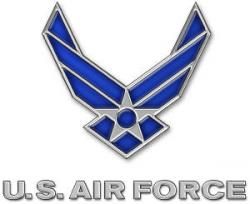Tue, Oct 28, 2014
Virtual Image Takeoff And Landing XI To Help Train Students At OK Base
Instead of flying in a computer-generated world reminiscent of a Windows 95 graphics reproduction, Joint Specialized Undergraduate Pilot Training students will take to the simulated blue skies in high definition, beginning Oct 27.

Vance Air Force Base in Oklahoma is the first base to receive the new system called Virtual Image Takeoff and Landing XI.
"Students will have much better visual image," said Michael Oaks, the site manager overseeing the system upgrades. "The brightness capability of the new system is about five to six times that of the old system. The fine details of the display will be much crisper and will emulate the real world to a much greater degree."
Although the simulators are not full motion, these enhanced visuals will give students a more realistic feeling of motion due to their domed screens.
The new system is running on four T-6 simulators that are undergoing acceptance testing, which officials said should be complete by Oct. 24. All 17 simulators are slated to be upgraded by January.
"Acceptance testing is where representatives of the Air Force and flight safety perform a prescribed set of functional tests, designed to show that the new equipment is functioning properly per the specification of the contract," Oaks said.
"T-6 students will receive much better training with this upgrade," said Lt. Col. Joseph Roche, a 5th Flying Training Squadron instructor pilot and simulator instructor. "We will be taking a giant step into 21st century technology with this upgrade."
Roche had the opportunity to fly in the new simulators.
"They are incredible," Roche said. "The upgrade provides much improved capabilities like undated terrain elevation cuts, which allow more realistic peripheral visual cues.”
The software introduces more accurate airport environmental cues, such as beacon lights, approach lights and taxiway configurations, he said. It also increases the ability for simulator instructors to inject realistic conflicts like multiple aircraft, blowing dust, snow and icy runways. All of these improvements provide better initial training for students to learn ground references.
"I absolutely love the new upgrade," Roche said. "I am very excited to instruct T-6 students with the new upgrade."
Currently, students fly one low-level simulator sortie. During the acceptance testing at another base, the visual cues were so crisp and clear that Roche was able to fly the Vance local low-level without the use of a map.
ANN Salutes Senior Airman Frank Casciotta, 71st Flying Training Wing Public Affairs
More News
Circle To Runway (Runway Number) Used by ATC to inform the pilot that he/she must circle to land because the runway in use is other than the runway aligned with the instrument appr>[...]
Aero Linx: National Aviation Safety Foundation (NASF) The National Aviation Safety Foundation is a support group whose objective is to enhance aviation safety through educational p>[...]
At Altitude Of About 250-300 Ft Agl, The Airplane Experienced A Total Loss Of Engine Power On November 6, 2024, at 1600 central standard time, a De Havilland DHC-1, N420TD, was inv>[...]
From 2009 (YouTube Edition): Three Hour Flight Was 'Flawless' -- At Least, Until Mother Nature Intervened For anyone who loves the aviation business, this was a VERY good day. Afte>[...]
Also: AMA Names Tyler Dobbs, More Falcon 9 Ops, Firefly Launch Unsuccessful, Autonomous F-16s The Air Force has begun ground testing a future uncrewed jet design in a milestone tow>[...]
 ANN's Daily Aero-Term (05.05.25): Circle To Runway (Runway Number)
ANN's Daily Aero-Term (05.05.25): Circle To Runway (Runway Number) ANN's Daily Aero-Linx (05.05.25)
ANN's Daily Aero-Linx (05.05.25) NTSB Prelim: De Havilland DHC-1
NTSB Prelim: De Havilland DHC-1 Classic Aero-TV: The Boeing Dreamliner -- Historic First Flight Coverage
Classic Aero-TV: The Boeing Dreamliner -- Historic First Flight Coverage Airborne-NextGen 05.06.25: AF Uncrewed Fighters, Drones v Planes, Joby Crew Test
Airborne-NextGen 05.06.25: AF Uncrewed Fighters, Drones v Planes, Joby Crew Test



